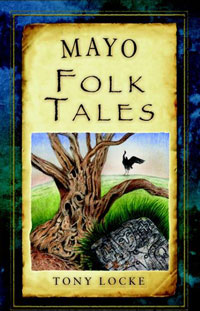

The Art of Spinning.
The art of spinning has always been a big part of domestic life. Until about 1550 all thread was spun with a distaff and spindle. The distaff is a cleft stick, which holds the carded wool or plant fibres. The spindle is a straight stick weighted with a detachable whorl at the bottom. The spinner (or spinster?) pulls the fibres out with one hand, twisting them between finger and thumb and winding the thread onto the spindle.
Archaeologists find spindle whorls buried in graves. Genealogists refer to the ‘distaff’ side of the family, meaning the female side and the term spinster is still the legal term for an unmarried woman. The tools of the spinner are deeply imbedded in our language and folklore.
Spinning is the art of transforming loose fibres such as wool and flax into thread. This is done by pulling out the fibres to the required width and introducing twist to fix and strengthen them. The ancient tools of the spinner were the distaff and the spindle. The distaff was a long staff to which the fibres were tied to keep them untangled. The spindle was a short shaft weighted with a stone whorl which was used like a suspended spinning top to provide momentum and the downward pull of gravity for the work. These same implements were the spinner's only tools until the late fourteenth century when early spinning wheels were developed. The first Spinning wheels were large, inefficient, expensive and unpopular so the spindle remained in common use until the eighteenth century.
The spinning wheel, which was operated by a foot treadle, leaving both hands free to work the thread, appeared around 1550 in wealthy households. Of course, there was a crossover period as more and more people got spinning wheels, instead of spindles.
A common theme of spinning tales is the breaking of magical boundaries. Spinning women attract all kinds of supernatural creatures and spirits, hostile spirits include the mischievous fairies from the Scottish tale ‘The Good Housewife and her Night Helpers’. The housewife worked late at her spinning while her family slept. Eager to complete her weaving she made a wish that someone would come from land or sea, far or near to help her finish the work. This unwise request summoned a large number of fairies who took up the woman’s carding, spinning and weaving. The fairies kept crying out to the housewife for food until the larder was empty and the poor woman was half demented. She tried to wake her family but they were all deep in an enchanted sleep. Terrified she ran from the house and consulted the village elder who helped her extract the fairies by trickery
A very similar story is told in here in Ireland in which a spinning housewife, working late, was visited by ten witch women. Each of them had horns growing out of their foreheads and carried wool combs, a reel or a spinning wheel. They all sat down in the house and began to work at the wool with lightning speed. Again the housewife was driven to distraction by their demands for food and ran from the house to fetch water for baking. She was helped by a kindly spirit living in the well and the witches were expelled, again by trickery. I have already written a little about this story in an earlier post.
The spindle comes across strongly as a symbol of womanhood (of a straight laced, hearth tied, skirt bundled variety, from an age when both sexes worked themselves to exhaustion in the daily round). But even in her subservience a woman held power and the distaff was her weapon against the world of men. In the domestic battle the medieval woman reached for her distaff, a far more versatile weapon than today's rolling pins due to its length.
Femininity and spinning have come hand in hand through the centuries. We still use the terms 'distaff side' and 'spinster' their original relevance forgotten.
The spindle is the symbol of the female sex and consequently the symbol of leading goddesses from across the world. The use of the spindle by the fates of classical literature and the importance of female magic have enforced the connection between spinning and the supernatural.


No comments:
Post a Comment